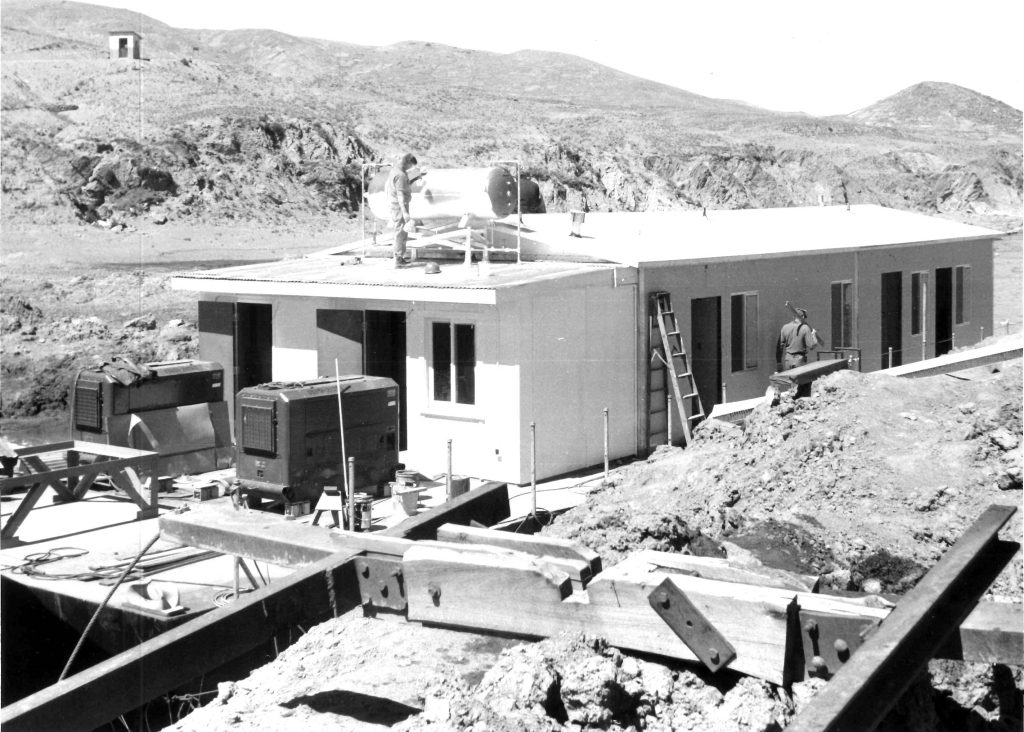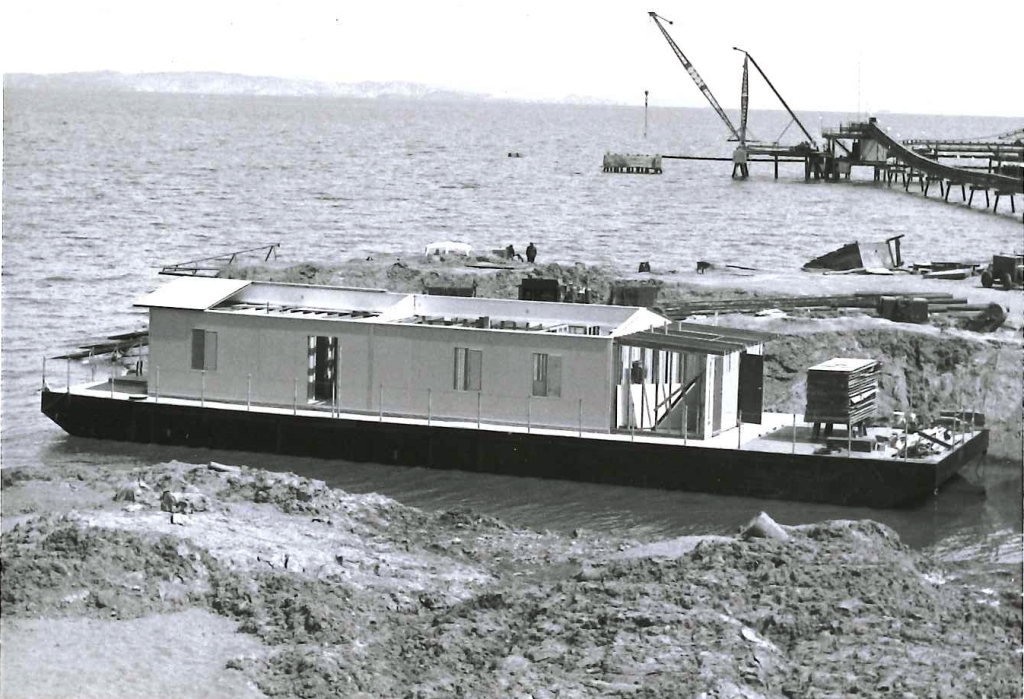In 1972, the Navy called the Seabees into action to assist Bolivian civilians living in remote areas around Lake Titicaca, 2½ miles above sea level, in the Andes. In January 1972, the Bolivian Government requested assistance from the US to build a hospital barge on Lake Titicaca to serve the neglected rural citizens living in the mountains and villages. The US Navy and the US Agency for International Development (USAID) worked with the Bolivian Navy to bring the project to fruition and assist rural Bolivian citizen in desperate need of medical services.
Project Titicaca
Part of the Bolivian Navy’s mission is to promote socio-economic development through military civic action. To meet this mission, Dr. Luis Kushner, director of medicine for the Bolivian Navy, developed the idea to create a hospital vessel on Lake Titicaca to visit rural villages and help citizens desperately needing medical and dental treatment. Project Titicaca provided medical services to over 200K Aymaran people living in inaccessible villages in the Altipano region. The Bolivian Navy, with the assistance of the Bolivian Ministry of Public Health, sponsored the project with the support of the US Navy and USAID.
The US Navy used personnel, expertise, and surplus materials to assist the Bolivians in achieving their goal. Naval Facilities Engineering Command (NAVFAC) designed the hospital barge using an AMMI pontoon system and a prefabricated building, and order a Seabee Team be formed to construct the barge in Bolivia. Surplus hospital supplies and equipment from hospital closures and modernization were located and made available for the hospital barge project.
In March 1972, the Commanding Officer of Naval Mobile Construction Battalion Seventy-four (NMCB-74) received orders to establish and deploy Seabee Team 7412 to Puerto Chaguaya, Bolivia to construct the hospital barge. This included erecting a prefabricated building and installing electrical power with generators, potable water and fuel storage; berthing and medical treatment spaces; and propulsion and anchor system.
The US Navy did not accomplish this assistance effort alone. They collaborated with the US Agency for International Development (USAID) who has the mission to help rural citizens in underdeveloped and emerging nations with humanitarian aid and public health assistance. USAID Bolivia Mission took part in the project by procuring construction materials and supplies.
Barge Construction
Seabee Team 7412, consisting of nineteen members, arrived at La Paz, Bolivia, 2 June 1972, to finalize preparations before traveling 100 miles northwest to the construction site near the small mining town of Puerto Chaguaya on 4 June. A tent camp, which consisted of three “strong back” tents were set up and the matting foundation for the launching ramp laid. From 6-10 June the timber and steel pipe launch ramp was constructed.
Work began on 11 June to build the 90 ft. by 28 ft. AMMI pontoon barge. Pontoons damaged in transit required considerable repairs before assembly could begin. On 11 July, the pontoon was completed and a D-6 dozer and front-end loader pulled the barge down the ramp and into the water. The Seabees built a prefabricated Lewis building on the barge to serve as the dispensary. Powered by two diesel outboard engines, the barge contained all the basic hospital and dental facilities of a small hospital.
One of the more rewarding aspects of the deployment was the contact the team had with 15 Bolivian sailors who worked part-time as construction trainees and another 15 who served as port and camp security. From the day the Seabees arrived at Chaguaya, the sailors and Seabees hit it off, and the sailors seemed fascinated by the Seabee’s ability to build anything with their strange assortment of tools and equipment. The team provided vitally needed training in welding, diesel engine mechanics, and general construction skills, while the Seabees received valuable peacetime training in remote-area construction.
The Lake Titicaca surface elevation is 12,507 ft. (3,812 m) making it the highest navigable lake for commercial craft. The elevation caused minor medical issues among the team including altitude sickness, waking up feeling near suffocation, nightmares, and difficulty concentrating due to low oxygen levels. Others had severe abdominal issues and severe bacterial infections even if it was a minor scratch when not treated immediately. This prohibited the corpsman from leaving the job site and performing normal deployment MEDCAPS services.
The Seabees completed the hospital barge on 6 September 1972 and turned it over to the Bolivian Navy after sea trials and training. On 15 September, the Bolivian Navy took the barge, christened the JULIAN APAZA after an early Aymaran leader, from Puerto Chaguaya to Copacabana where the final turnover ceremony was held.
Project Titicaca displayed the Seabee’s abilities to assist emerging nations wishing to improve the socio-economic conditions for broad segments of their citizens. The US Navy’s assistance to the Bolivian Navy in Project Titicaca carried special significance. The use of Navy resources to advance humanitarian causes in direct support of US foreign policy objectives was an embodiment of the post-Vietnam “swords to plowshares” concept. The interagency approach with USAID, augmented with assets donated by the private sector, provided a valuable example for future programs and projects that worked toward a common national objective.













